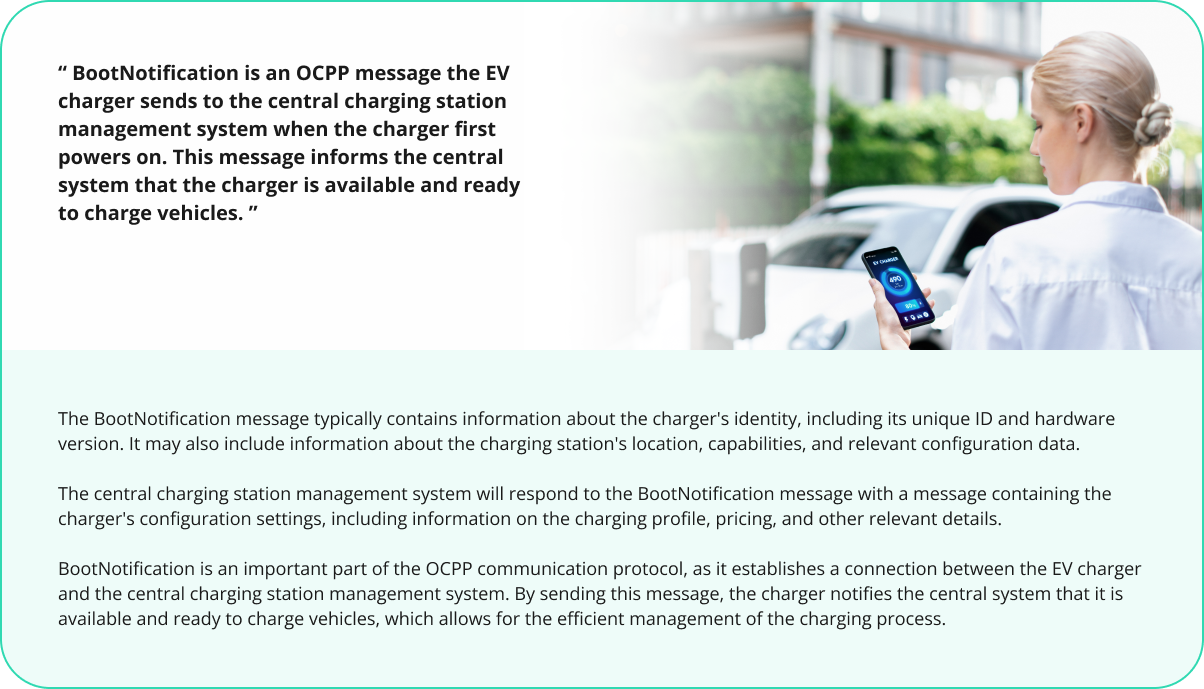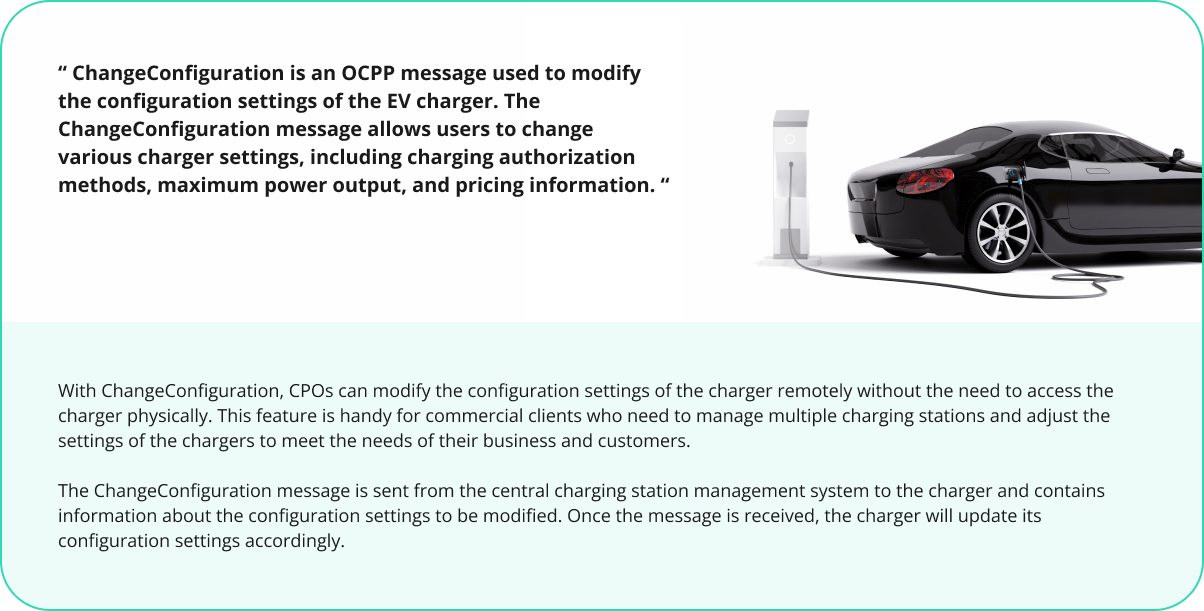Enhancing Your Business’s Sustainability with the Right EV Charger Provider: A Technical Approach

As electric vehicles become more popular, businesses are increasingly interested in providing EV charging stations for their customers and employees. Choosing the right EV charger provider for your commercial clients is a critical decision that can significantly impact your business. By evaluating the technical aspects of different EV charger providers, you can make an informed decision that will best suit your business needs.
To help you in this process, this article will cover five key technical considerations when evaluating EV charger providers. These considerations include analysing past changelogs related to firmware updates, understanding the timing of EVSE operational state, evaluating charging profiles and limitations, investigating the charger’s physical durability and weather resistance, and considering the different charging authorization methods the provider offers.
Analysing these factors will help you make an informed decision that will best meet your business needs. Remember that the technical aspects that are most important to your business may differ from those of other companies, depending on your specific needs and priorities. By carefully evaluating each provider and prioritising the technical factors that matter most to you.
1. Firmware updates and OCPP communication
Analysing past changelogs related to firmware updates is essential in evaluating an EV charger provider. It will help you understand what information the manufacturer shares and how detailed it is. This information can give you an idea of the level of support you can expect from the manufacturer and how responsive they are to improve their products.
Additionally, you should look for a manufacturer with good communication and support channels if you have any questions or issues. This includes having easy access to customer support, technical documentation, and firmware updates.
OCPP (Open Charge Point Protocol) communication is a standard protocol for communication between the EV charger and the charging station management system. Changes to OCPP communication may require modifications to the OCPP server, so it’s important to consider this factor when evaluating EV charger providers.
You should also consider whether the manufacturer provides changelogs of planned firmware updates. Changelogs are detailed documentation of changes made to the firmware, which can help understand what has been made and what to expect from new updates. This can help determine whether the manufacturer proactively improves their products and provides the necessary updates to keep them functioning optimally.
2. Timing of EVSE operational state
The timing of the EVSE operational state is the state in which the wall box can receive and execute commands, especially after sending the BootNotification. This timing is crucial to ensuring the wall box is ready to charge as soon as the vehicle is plugged in.

It’s important to look for a manufacturer that can provide timing guarantees for EVSE operational state. This will give you greater confidence in the charger’s reliability and ensure that the charger is always ready to charge.
You should also consider the charger’s performance during peak charging hours and its ability to handle multiple charging sessions simultaneously. This is especially important for commercial clients, as a slow charging rate or long wait times can result in a negative customer experience.
Considering the timing of the EVSE operational state, you can ensure that the wall box is ready to charge as soon as the vehicle is plugged in and that the charger can handle multiple charging sessions simultaneously.
3. Charging profiles and limitations
Charging profiles and their limitations can have a significant impact on the overall performance of the EV charger. Charging profiles are settings that determine the charging behaviour of the charger, such as the charging rate, maximum charging power, and charging time. Different charging profiles can be used to optimise charging for different EVs and batteries.
You should look for a manufacturer that provides detailed information on the types of Charging Profiles implemented on the wall box and if there are any limitations in ChargingSchedule setups. This will help determine if the manufacturer’s charging profiles meet your business’s needs.

In addition, you should evaluate the charger’s ability to adjust its charging rate based on the battery’s state of charge. It can help optimise the charging time and efficiency of the charger. The charger should also handle different EV types with varying sizes of batteries and charging capabilities.
Another important consideration when evaluating charging profiles is the charger’s ability to support different charging modes, such as DC fast charging and Level 2 AC charging. Depending on the types of EVs that will be charged at your business, you may need a charger that can support different charging modes.
By evaluating charging profiles and their limitations, you can ensure that the charger is optimised to charge different EVs and batteries and handle different charging speeds and schedules.
4. Physical durability and weather resistance
Physical durability and weather resistance are important factors when evaluating an EV charger provider. The charger’s housing and construction materials can affect its durability and resistance to accidental damage and vandalism.
You should investigate the quality of materials used in the charger’s construction, such as the type of metal or plastic used for the housing. It can give you an idea of how durable the charger will be and whether it can withstand regular use.
In addition, you should check the charger’s weather resistance and temperature handling. The charger should perform optimally in different weather conditions, including extreme temperatures and precipitation. This is especially important for outdoor charging stations exposed to the elements.
You should also consider the charger’s compliance with safety regulations and standards. For example, the charger should meet all applicable safety regulations and standards, such as UL certification. It should have safety features such as ground fault protection and circuit breakers.
Finally, you should investigate any issues or incidents related to the physical durability of the charger. It will give you an idea of whether the manufacturer has a history of product problems and how responsive they are to addressing them.
By investigating the charger’s physical durability and weather resistance, you can ensure that the charger can withstand regular use and perform optimally in different weather conditions. You can also ensure that the charger meets all applicable safety regulations and standards and that the manufacturer has a history of addressing any issues related to their products.
5. Charging authorization methods
Different charging authorization methods can have varying levels of security and convenience. Therefore, it’s crucial to choose a manufacturer that provides different charging authorization methods to accommodate the needs of different customers and use cases.
You should look for a manufacturer that can enable or disable different charging authorization methods with a ChangeConfiguration OCPP message. This gives you greater flexibility and control over who can use the charger and how.

Different charging authorization methods include RFID, mobile app, or credit card. You should evaluate each method’s level of security and ease of use. For example, RFID cards can easily and conveniently authenticate customers, while mobile apps can provide a more secure and personalised experience.
You should also consider the charger’s ability to integrate with third-party payment systems and billing platforms. As a result, it will help streamline your business’s and your customers’ billing and payment process.
Finally, you should investigate any manufacturer-specific communication channels the charger may have, as they may not be easily configurable or accessible. You should evaluate the level of control over the charger’s settings and configurations and whether you can manage the charger independently or need to rely on the manufacturer’s cloud-based platform.
You can choose a manufacturer that provides the most appropriate and convenient methods. You can also ensure that the charger integrates with your preferred billing and payment systems and that you have complete control over the charger’s settings and configurations.
Conclusion
Choosing the right EV charger provider for your commercial clients is a critical decision that can significantly impact your business. Considering the technical aspects discussed in this article, you can evaluate different providers and make an informed decision that meets your needs.
It’s important to prioritise the technical factors that are most important for your business and carefully evaluate each provider to ensure that they meet your requirements. Factors to consider include firmware updates and OCPP communication, the timing of EVSE operational state, charging profiles and limitations, physical durability, weather resistance, and charging authorization methods.
While different businesses may have different priorities and requirements, by considering these factors, you can ensure that you provide a reliable and convenient charging experience for your customers and employees. Remember to choose a manufacturer with a track record of providing high-quality products and responsive customer support.
In conclusion, by making an informed decision based on technical considerations, you can provide a reliable and convenient charging experience that meets your business needs and enhances your reputation as a sustainable and forward-thinking business.
contact us
Need expert guidance on your next energy project?
Reach out to us and discover how Codibly can offer tailored solutions to drive your business.